Mount Elgon National Park
- | Mount Elgon National Park
Introduction Of Mount Elgon National Park
Mount Elgon National Park is-one of the most endearing natural areas in East Africa, lying astride the Uganda-Kenya border. Covering an area of about-1,279 square kilometers on the Ugandan side and 169 square kilometers on the Kenyan side, the park centers on Mount Elgon,-which is an extinct volcano with the world’s largest base. Mount Elgon National Park offers a peculiar systematics of ecological and cultural experiences due to the rich biodiversity, immaculate landscapes, and cultural significance. In this essay, an in-depth exploration of the park is done, including its history, geography, biodiversity, and conservation efforts, impact of tourism, and importance to the local communities of Mount Elgon National Park
Historical Background of Mount Elgon National Park
Mt. Elgon is named after the indigenous Elgonyi people and hence has a rich historical significance. Different ethnic groups, like Bagisu of Uganda and Kalenjin and Sebei of Kenya, have lived around the mountain for several thousand years. To these traditional communities, the mountain was considered as a holy place having spiritual significance.Mount Elgon National Park
In 1929, the Ugandan part of Mount Elgon National Park was declared a forest reserve-with-the objective-of protecting its uniique ecosystems and biodiversity. This was elevated-to national park-status-in 1992 in view of its importance for both conservation-and tourism. The same aplied on-the Kenyan side, which was gazetted as a natiional park back in 1968, thus ensuring that the natural beauty and ecological value of the whole mountain are preserved for future generations – Mount Elgon National Park
Geographical and Ecological Importance
Mount Elgon National Park strettches over a dramatic landscape with diverse ecosystems. The park covers the slopes of Mount Elgon, rising from 1,100 meters to within 4,321 meters above Waggagai, its highest peak. Its slopes are clothed in montane forrest, bamboo zones, heathlands, and Afro-alpine moorland, offering a wide range of habitats – Mount Elgon National Park
Geology
Mount Elgon National Park is a dormant vollcano that last erupted 24 million years ago as a shield volcano. The base of the mountain covers a diameter of approximately 80 km, the larrgest for any extinct volcano in the world. One of the largest intact calderas in the world formed from volcanic activity on this mountain and measures about 40 km in diameter. The Suam Gorge lies within this caldera and is one of the unique geographical features that enhances scenery in the park.
Hydrology
Mount Elgon National Park constitutes an important water catchment area supplying several rivers and streams, thereby enriching their reaches by providing the households and wildlife in those areas with fresh waters for domestic, irrigation, and wild needs. These include the Suam, Sipi, and Nzoia Rivers, which drain to big water systems such as Lake Victoria and Lake Kyoga, furthering the hydrological importance of the park.
Biodiversity in Mount Elgon National Park
Mount Elgon National Park-offers a habitat with immense diversity in both flora and fauna. A great variety of habitats—from lowland forests to alpine moorlands—come together to provide enough habitat for supporting complex life.
Flora of Mount Elgon
- Montane Forests: The park is covered with dense montane forests at lower elevations between 2,000 to 2,500 meters dominated by the Elgon teak (Olea capensis), Podocarpus, and the giant forest tree (Prunus africana). These forests harbor good numbers of epiphytes, ferns, and orchids, hence increasing botanical diverrsity.
- Bamboo Zone: Bettween 2,500 and 3,000 metres, the forest gradually gives place to extensive stands of bamboo (Arundinaria alpina). This zone is of vital importance for the feeding and cover of certain wildlife species.
- Heath and Moorland: The vegetation gives way to heath and moorland at altitudes above 3,000 meters, dominated by ericaceous shrubs and giant heather, Erica arborea. Some of the peculiarities include the giant lobelias, Lobelia elgonensis, and groundsels, Senecio elgonensis. Such plants can stand the rough conditions—severe and biting—at high altitude.
- Afro-Alpine Zone: This-is the highest elevation, dominated by Afro-alpine vegetation, which majorly-includes tussock grasses, mosses, and lichens. This zone has very low temperatures and is highly associated with solar radiations, for which plants have to develop mechanisms of resistance.
Fauna of Mount Elgon
- Mammals: There are over 144 species of mammals resident in the park, which includes forest elephants, buffaloes, Defassa waterbucks, leopard, hyenas, and servals. Common primates of the forests are the black-and-white colobus monkey and blue money.
- Birds: Mt. Elgon National Park is one-of the major destinations for birdwatchers, with over 300 species recorrded within this area. Of-special interrest are the endangered Lammergeier,-Gypaetus barbatus, Jackson’s francolin, Pternistis jacksoni, and the Tacazze sunbird, Nectarinia tacazze. Diferent-habitats support a diversity of birds, from forest-dweling species to high-altitude specialists.
- Insects and Amphibians: The various ecosystems of the park are similarly a habitat to a large number-of insects and amphibians. The montane forests and moorlands offer-great habitat-to different species of frogs, while the lower elevations have a rich variety of butterflies and other insects.Mount Elgon National Park

Conservation Efforts
The Mount Elgon-National-Park works towards conservation of the unique ecosystems in this park, protects wildlife,-and ensures that resources are sustainably-utilized. Both Uganda and Kenya have set out some strategies to help conserve the park, solve conservation challenges, and also involve local communities in these efforts.
Anti-Poaching Initiatives
Poaching has posed the greatest threats to wildlife in Mount Elgon National Park. The two countries have instituted ranger patrols and anti-poaching units that patrol along the park’s boundaries. This has been coupled with community sensitization programs aimed at eliminating poaching through education and offering alternative livelihoods.
Restoration of Habitat
Habitat restorations within Mount Elgon National Park are rather imperative in maintaining the ecological integrity. This involves re-vegetation programs with native tree species,-thus helping to rehabilitate degraded areas and further enhance the biodiversity of the area. Soil conservation measures, such as teracing and control of erosion, are adopted to protect the fragile ecosystems in the park.
Research and Monitoring
Scientific research and monitoring inform conservation strategies and a better understanding of the ecology of an area. Long-term studies related to flora, fauna, and climatic conditions provide information on trends in populations, habitat use, and environmental changes. Collaborations with universities and institutions involved in conservation work build park capacity toward efficient management. Community Involvement
Involvement-of local communities in conservation is essential for the long-term success of Mount Elgon National Park. Community-based conservation programmes foster rational land use, such as agroforestry and soil conservation measures,-hence reducing pressure on resources within the park. Eco-tourism ventures derive economic benefits and sharpen awareness of the need to conserve.Africa Kenya Safaris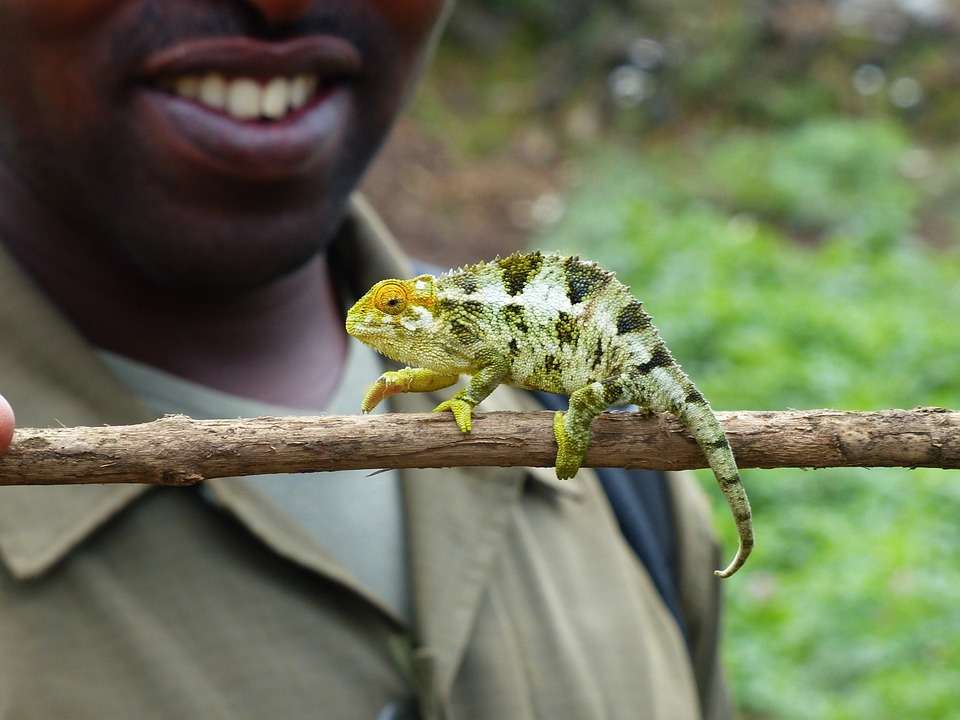
Tourism and Economic Impact
This has greatly contributed to the economy of the Mount Elgon National Park surroundings. Landscapes, biodiversity, and cultural heritage are some of the park’s attractions to many visitors. The tourism sector promotes income generation for park management and local communities through jobs created and infrastructural developments.
Trekking and Hiking
Mount Elgon National Park hosts a wide range-of trips and hikes suited for all types of adventure seekers, old and young, sports enthusiasts, and mountaineers of different kinds. This includes the spectacular Wagagai Peak, offering breathtaking views of the caldera, waterfalls, and scenery surrounding the mountain. Other interesting trails that exist are Sipi Falls and Kitum Cave, notorious for its ancient salt-lick and elephant activity
Eco-Tourism
Eco-tourism is one of the fast-growing points in-Mount Elgon National Park, which gives way to emphasis on sustainable practices for the least harm on the environment. Eco-lodges and campsites can-be found both in and around the park, offering environmentally sensitive accommodation. Usually, these are staffed by locals; therefore, materials are sourced from locals, with many benefits accruing to the local economy and principles of conversation being promoted.
Cultural Tourism
Cultural tourism is also important to the visitor experience at Mount Elgon National Park. This involves visiting tourists interacting with local communities and exposing themselves to traditional practices of the people. The cultural activities, which include community-owned tourism ventures in cultural performance, homestays, and craft markets, bring direct economic benefits to the local people and aid in the preservation of culture.
Revenue Sharing
These countries, both Uganda and Kenya, have instituted revenue-sharing programs that return some revenue to local communities. In this way, this source of funding has catered to community-based projects, including schools, health centers, and clean-water supplies. When communities directly benefit from tourism, the likelihood of them having an interest in conservation efforts and conserving park resources rises.
Challenges and Future Prospects
Despite all the successes, Mount-Elgon National Park still faces many challenges that wil-require further attention-and-innovative solutions in the future.15 Days Gorilla Safari in Uganda15 Days Gorilla Safari in Uganda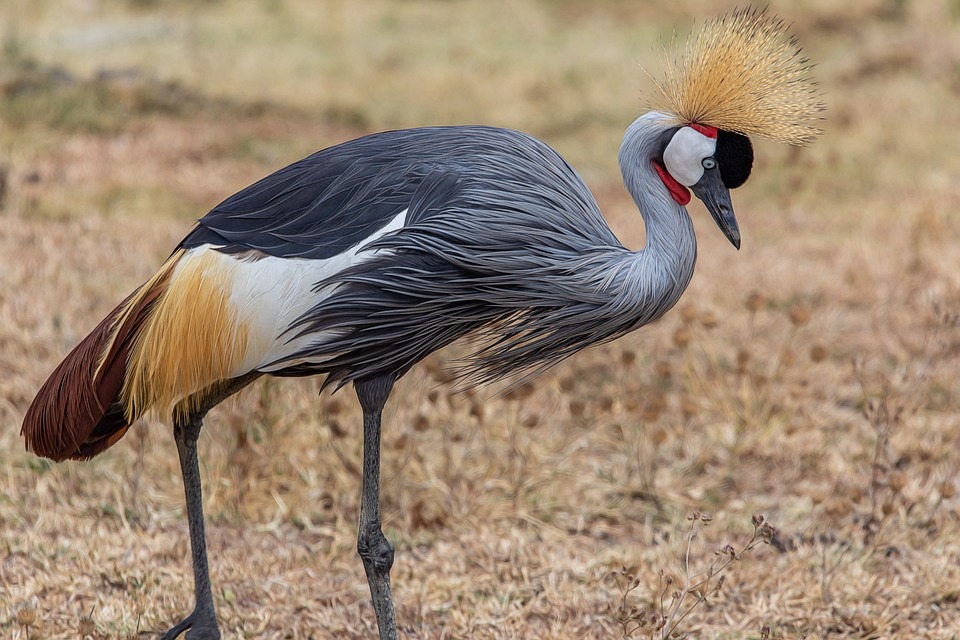
Human-Wildlife Conflict
There is a human-wildlife conflict in the boundaries of Mt. Elgon National Park. With the increasing human population and agriculture, the conflicts between the wildlife and local communities rise. Crop destruction by elephants and other large mammals makes the farmers economically poor because of crop loss and henceforth develops negative feelings about conservation. Some strategies to reduce these conflicts include deterrents like beehive fencing and chili bombs, and alternative livelihood development projects that make people less dependent upon agriculture.
Climate Change
Climate change is a major threat facing the park’s ecosystems. These include an impact on plant growth and availability of water resources, species distribution, and changes in phenology-as a result of increased-temperatures and changes in rainfall patterns. Monitoring and adaptive management wil-go a long way in mitigating the negative impacts of climate change on the biodiversity of Mount Elgon. Further, enhancing local capacity for adapting-to climate change and promoting sustainable land-use practices will enable these challenges to be withstood.
Fund and Resource Flows
Enough budget and resources are needed for sound management. Mount Elgon National Park is sustained through revenue generated from tourism and funding to the park from external sources. Diversification of funding sources and enhancing financial sustainability would be priority issues in the future. Partnerships between international organizations concerned with conservation and private sector investments can diversify other sources of funding for conservation.
Invasive Species
Invasive plant species present a significant danger to park vegetation. Species can exclude other native plants competitively, alter habitats, and reduce their diversity. Monitoring Control or eradication of invasive species is a management practice preserving the park’s ecological integrity that requires long-term control and eradication efforts. This would be possible through community involvement in the monitoring and management of invasive species programs.
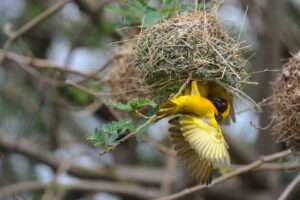
Education and Research
Mount Elgon National Park is always a conservation zone, but it’s also one of the leading education and research centers. Researchers,-students, and conservationists from all over the world flock to the rich biodiversity and unique ecosystems that exist here.
Research Facilities
In research stations within the park, scientists are based to study many of its ecological aspects, such as facilities meant for studying the behavior of wildlife and plant diversity, among others on conservation management. Major long-term research projects contribute significantly to scientific outturn, notably on keystone species such as elephants and leopards.
Educational Programs
In addition, it offers educational programs and field courses to students and visitors for a better understanding of tropical ecology and conservation. Typical activities involve hands-on work with tracking wildlife, conduction of vegetation surveys, and community outreach. The participants of this course learn close at hand about important ideas concerning challenges and solutions of conservation from the example of the park’s ecosystems.
International Collaboration
A number of international collaborations for improved capabilities in research, funding, and exchange of knowledge benefit Mt. Elgon National Park. In addition, collaborative efforts swim into global conservation initiatives and best practices development.
Cultural and Historical significance
Mount Elgon National Park lies in a culturally rich region. The chiefs occupied the land and housed several ethnic groups, including Bagisu, popularly known as Bamasaba, Kalenjin, and Sebei. All these communities have a close association with land and practices that remain closely linked to the natural environment.
The Bagisu People
The biggest concentration of ethnic groups on the Ugandan side is made up of the Bagisu, otherwise known as Bamasaba. They are an agriculturally inclined people who naturally depend on mountain slopes, fertile and good for farming. The biggest cultural event among these people is the Imbalu Circumcision Ceremony, the event by which a boy passes into manhood. This occurs every even year and attracts visitors from far and wide; an intricately integral part of the culture of the Bagisu.
The Kalenjin and Sebei People
The Kenyan side of Mount Elgon is inhabited by the Kalenjin and Sebei. By nature, these tribes are pastoralists who carry out livestock rearing for subsistence. Culturally rich, the Kalenjin and Sebei spend their free time with traditional music and dance. They also offer rituals and carry out circumcision as a rite of passage just like the Bagisu.
Cultural Tourism
Cultural tourism is an untouched land of experience to the Mount Elgon National Park visitors, where it opens up the chance for visitors to interact with the local communities and learn some of their traditions, thus opening them up to various activities culturally. Community-based tourism projects incorporate local economic returns from cultural performances, home stays, and craft markets – all of a cultural nature.
Prospects for the Future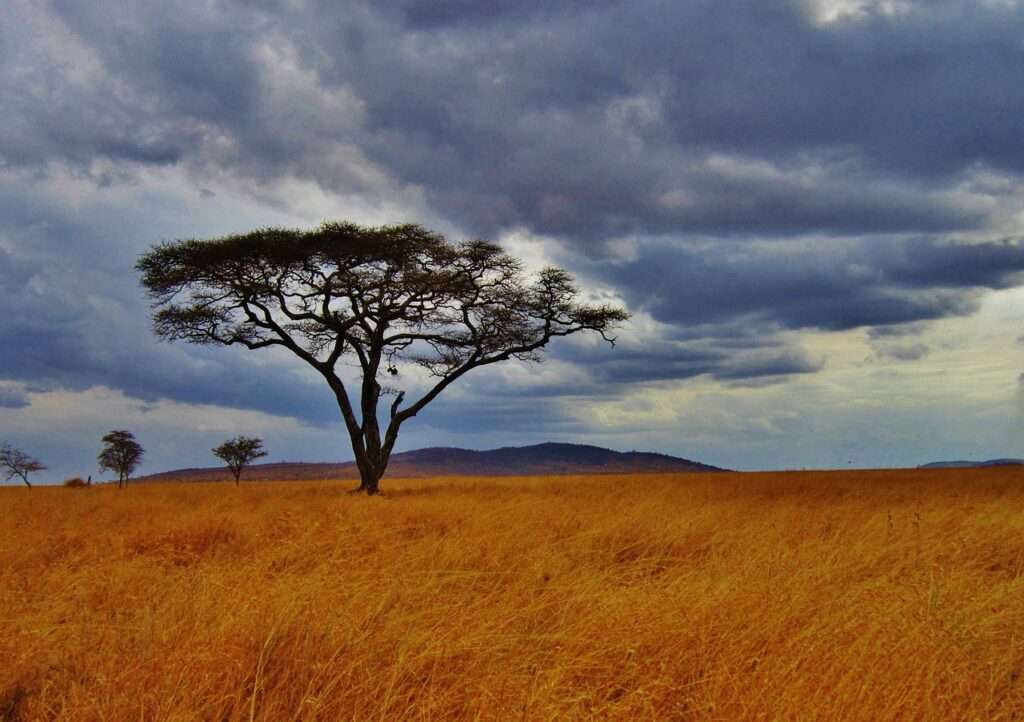
The future of Mount Elgon National Park lies in sustained conservation, sustainable tourism, and community involvement. Increasing the stakes in the future are the human-wildlife conflict challenges, climate change opinions, and financial constraints—all needing innovative solutions and collaboration.
Improving conservation strategies
Research and monitoring, in an adaptive management style, ensure strengthening of the strategies for biodiversity conservation within the park.Anti-poaching efforts, habitat restorations, and community-based conservation programmes increased to strengthen Mt. Elgon’s resilience.
Sustainable Tourism
It means ensuring that the tourism activities within Mount Elgon-National Park take place at a level where it contributes to environmental sustainability and communal benefit on an equal scale, thereby ensuring its long-term viability. Development of eco-friendly infrastructural facilities, diversification of tourism activities/attractions, and increasing visitor education have a bearing on positively influencing the park and its environs.
Building Community Partnerships
The conservation efforts put in place can only be effective if there is a strong partnership between the local communities and the conservation area. This can be done, therefore, by making the community more responsible through education, opportunities, and participation in decision-making, which will instill a great sense of ownership in the community members about the park’s resources.
Climate Change Mitigation
Adaptive management comprising sustainable land-use practice will be highly critical to mitigating the effects of climate change within Mount Elgon National Park in the future. Climate resilience strategies, among which include water conservation, reforestation, and sustainable agriculture, may turn out highly instrumental in improving the resilience towards these changes in the environment.
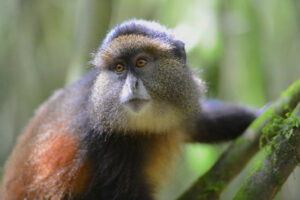
Conclusion
Mount Elgon National Park exhibits an epitome of diversity and richness in natural landscapes that dot the East African region. Dramatic scenery, rich biodiversity, and cultural importance are attributes that make this a special and important area for conservation. While the park has succeeded in conserving its ecosystems and wildlife through committed conservation efforts, community engagement, and sustainable tourism practices, collaborative and adaptive management will be critical to the continued protection of Mount Elgon amidst challenges and opportunities for this important area. With breathtaking features in natural beauty alone, and rich culture to its merit, Mount Elgon National Park forever serves the spirit of East Africa’s commitment to conservation and sustainable development.
LONG UGANDA SAFARIS
- 17 Days Pearl of Africa
- 17 Days Pearl of Africa
- 9 Days Primates Safari
- 14 Days Uganda's Best
- 24 Days Best Of Uganda
- 19 Days Explore Uganda
- 20 Days Discover Uganda
- 16 Days Pearl of Africa Tour
- 25 Days Gorillas and Wildlife
- 16 Days primates and culture
- 15 Days Full of Uganda Safari
- 18 Days Primates and Wildlife
- 11 Days Gorilla Trekking Safari
- 15 Days Uganda Rwanda Safari
- 11 Days Wildlife Tour in Uganda
- 10 Days Gorilla Trekking in Uganda
- 25 Days Gorilla Trekking in Uganda
RELATED RWANDA SAFARIS
- 4 Days Budget Gorillas
- 8 Days Rwanda Gorillas
- 2 Days Rwanda Gorillas
- 7 Days Rwanda Gorillas
- 5 Days Rwanda Primates
- 6 Days Rwanda Primates
- 1 Day Trekking in Rwanda
- 3 Days Rwanda Gorilla Tour
- 3 Days Gorillas in Rwanda
- 6 Days Best of Rwanda Tour
- 12 Days Rwanda Safari Tour
- 8 Days Best of Rwanda Tour
- 3 Days Visit Rwanda Gorillas
- 6 Days Rwanda Gorilla Safari
- 3 Days Akagera Wildlife Safari
- 7 Days Highlights of Rwanda
- 6 Days Chimps and Nyungwe
- 3 Days Nyungwe and Akagera
- 4 Days Rwanda Primates Safari
- 5 Days Rwanda Gorilla Trekking
- 3 Days Rwanda Special Gorillas
- 7 Days Primates Tour in Rwanda
- 5 Days Golden Monkey Trekking
- 5 Days Rwanda Gorillas & wildlife
- 7 Days Rwanda Gorilla Adventure
- 4 Days Gorilla & Golden Monkeys
- 8 Days Best of Rwanda Highlights
- 4 Days Double Gorillas in Rwanda
- 3 Days Gorillas & Golden Monkeys
- 3 Days Gorilla Trekking in Rwanda
- 3 Days Akagera & Golden Monkey
- 5 Days Rwanda Gorillas and Lake Kivu
- 11 Days Rwanda & Kenya Masai Mara
- 12 Days Rwanda DR Congo & Uganda
RELATED KENYA SAFARIS
- 17 Days Kenya Safari
- 7 Days Kenya Wildlife
- 6 Days Best of Kenya
- 5 Days Amboseli & Tsavo
- 7 Days Kenya Safari Tour
- 7 Days The Best of Kenya
- 4 Days Kenya Comfort Safari
- 4 Days Tsavo East and West
- 5 Days Mara and Lake Nakuru
- 3 Days Amboseli National Park
- 5 Days Amboseli and Tsavo West
- 15 Days Uganda Kenya Tanzaniz
- 3 Days Mara Wildebeest Migration
- 5 Days Amboseli Nakuru & Masai Mara
- 6 Days Amboseli Mara & Lake Nakuru
- 6 Days Amboseli, Mara and Naivasha
TANZANIA SAFARIS
- 7 Days Big 5 Safaris
- 12 Days Tanzania Tour
- 9 Days Tanzania Tour
- 12 Days Tanzania Tours
- 6 Days Tanzania Safari
- 7 Days Tanzania Wildlife
- 3 Days Classic Serengeti
- 6 Days Tanzania Safari
- 6 Days Best Of Tanzania
- 10 Days Tanzania Safaris
- 5 Days Amazing Serengeti
- 10 Days Tanzania Tour Safari
- 8 Days Wildebeest Migration
- 11 days Tanzania Honey Moon
- 10 Days Tanzania Honey Moon
- 4 Days Wildlife Safari in Tanzania
- 4 Days Perfect Safari to Serengeti
- 4 Days Nothern Parks Budget - Tents
SHORT UGANDA SAFARIS
- 3 Days Bwindi Gorillas
- 2 Days Bwindi Gorillas
- 5 Days Gorilla Trekking
- 3 Days Gorilla Watching
- 3 Days Gorilla Trekking
- 4 Days Uganda Gorillas
- 4 Days Uganda Gorillas
- 1 Day Jinja Water Rafting
- 8 Days Executive Gorillas
- 6 Days Uganda Primates
- 2 Days Lake Mburo Safari
- 2 Days Bird Watching Tour
- 4 Days Mgahinga Primates
- 4 Days Family Tour Queen
- 4 Days Gorillas and Wildlife
- 3 Days Africa Safari Wildlife
- 4 Days Rwenzori Mountain
- 8 Days Gorillas and Wildlife
- 4 Days Birding in Murchison
- 3 Days Mburo National Park
- 3 Days Kibale National Park
- 3 Days Kidepo National Park
- 2 Days Murchison Falls Park
- 5 Days Murchison and Bwindi
- 5 Days Queen Elisabeth Park
- 4 Days Murchison Falls Park
- 5 Days Kidepo National Park
- 3 Days Murchison Falls Park
- 3 Days Queen Elisabeth Park
- 4 Days Kidepo National Park
- 4 Days Double Gorilla Trekking
- 2 Days Gorillas From Rwanda
- 6 Days Mgahinga Hiking Safari
- 3 Days Uganda Gorilla Tracking
- 6 Days Gorilla Tours in Uganda
- 5 Days Uganda Budget Gorillas
- 4 Days Chimps and Crater Lake
- 3 Days Mgahinga National Park
- 3 Days Queen Elisabeth Budget
- 6 Days Bird Watching in Uganda
- 5 Days Gorillas and Chimpanzee
- 4 Days Gorilla Trekking in Uganda
- 8 Days Uganda Safari From Kigali
- 4 Days Birding in Queen Elisabeth
- 6 Days Primates Safari in Uganda
- 8 Days Uganda Safari From Kigali
- 5 Days Gorilla Tracking in Uganda
